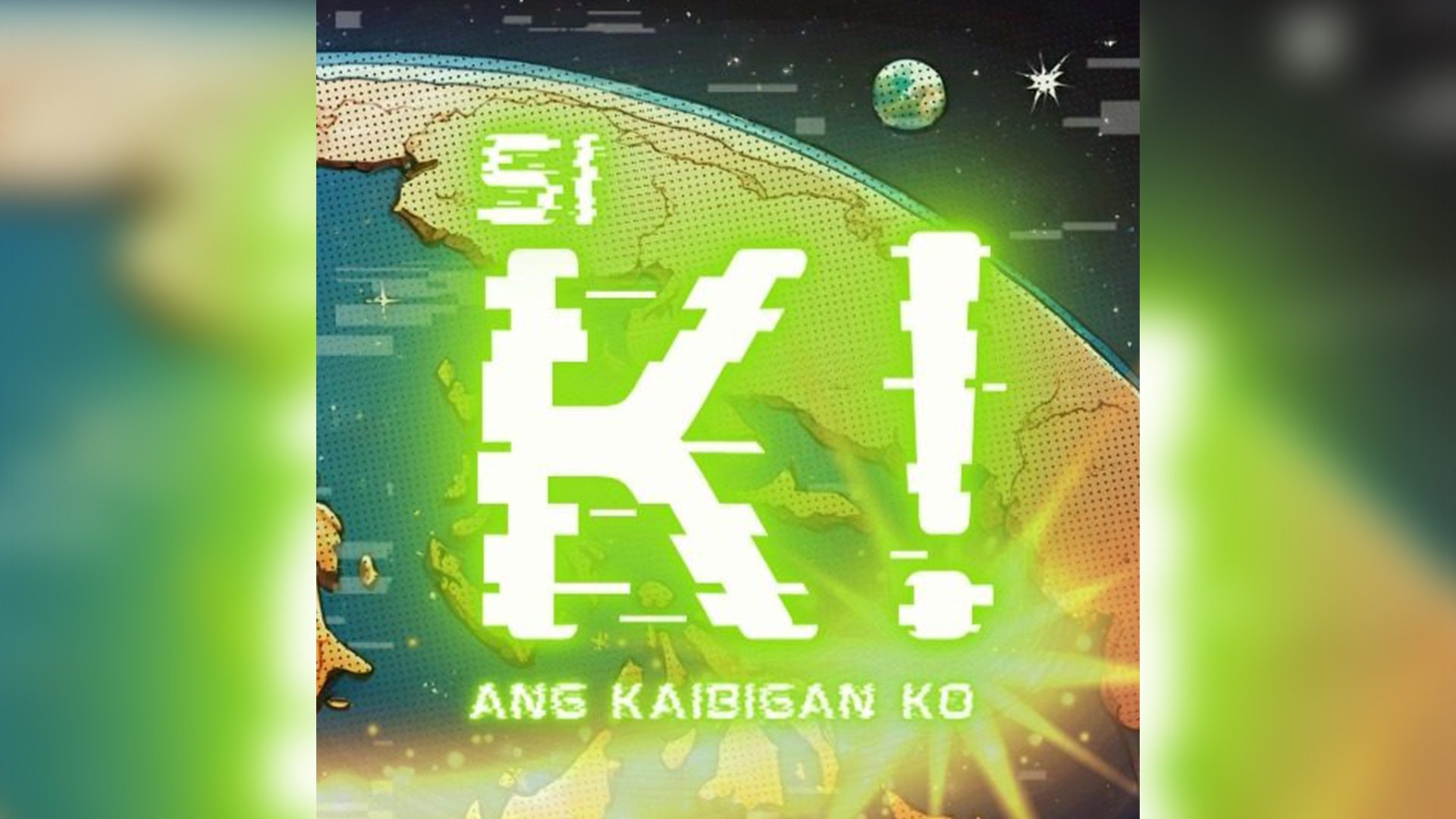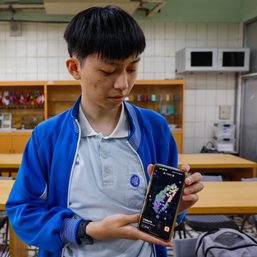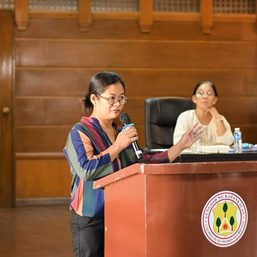SUMMARY
This is AI generated summarization, which may have errors. For context, always refer to the full article.

MANILA, Philippines – When Chris Sanchez tries to think of the best ways to communicate science, he tests his ideas on their most important audience: children.
“I would show them what’s on our Facebook page…. Even with simple feedback from children…that’s where we get our many ideas,” Chris said in Filipino.
This is the vision of the small creative team under the Research and Creative Works (RCW) division of the University of the Philippines (UP) Resilience Institute. They want to make science more lively and imaginative for younger audiences.
The UP Resilience Institute focuses on climate science and research. Some of its members are not scientists, but have been passionate about science communication even before joining the institute.
Glecy Atienza, who joined as RCW director in May 2023, is in the theater and performing arts field, but has been integrating arts and communication with science as early as 2014.
“We want to have an integration of disciplines, so that people see that this is one and the same experience that we’re looking at from different lenses,” Glecy said in Filipino.
One of the most interesting campaigns she has worked on with her performing arts network, she said, was Hello Healthy, Goodbye Dumi, a training program on wash and zero open defecation.
As part of the campaign, Glecy wrote a play encouraging Filipinos to set up toilets in their homes. And for that, she had to learn about the science behind the spread of diseases from infected people’s feces, which took her around two months to grasp.
Other campaigns she has worked on include collections of songs like Handa… Awit… Lindol!, which was about earthquake and disaster preparedness; and Handa Awit Pandemya about COVID-19 protection.
Now that Glecy works at the UP Resilience Institute, she wants to focus on campaigns encouraging Filipinos to make disaster preparedness a habit and understand the scientific concepts behind it.
A December 2022 survey of the Social Weather Stations founds that only 43% of Filipinos said they were “somewhat prepared” for a typhoon as strong as Super Typhoon Yolanda (Haiyan).
Yolanda is one of the most catastrophic typhoons recorded to have hit the Philippines, mostly ravaging parts of Eastern Visayas on November 8, 2013, killing more than 6,000 Filipinos.
“We are looking for a platform of communication that may popularize scientific concepts that are hard to understand…. We want resilience to be something that we have in mind everyday, and not only when there are drills,” Glecy said in a mix of Filipino and English.
Glecy and her team have been working on Panahon Na!, a collection of stories and content that aims to make climate change and weather simple and easy to understand. Part of the collection is the new comic strip series Si K! Ang kaibigan ko, which follows a young character from a fictitious planet, who lands on Earth.
Arman Mangilinan, one of the creative team’s writers, shares that the main challenge in writing the stories is trying to catch the attention of their target audience – teens and children.
But as a kid who grew up watching educational television, he found inspiration in Filipino educational television shows in the ‘90s like Batibot and Sine’skwela.
It is not the first time for Arman to work on climate-related creative projects. Like Glecy, Arman is in the performing arts field with a graduate degree in creative writing.
What sparked his passion about climate action and science communication was when he performed in a documentary theater in 2015, which was based on the experiences of Yolanda survivors.
“In this [documentary theater], I saw the need for action against climate change…. And climate action will come from us,” Arman said in Filipino.
Glecy and Arman had worked together on other projects prior prior to their stint at the UP Resilience Institute. One of their projects was a radio drama which aired on the DZUP radio station, where the characters tackle the challenges of the pandemic.
Though Glecy has performed plays in big theaters, she sees herself more in places where information is harder to reach.
“My advocacy is to use methods that are popular, simple, and easy to understand,” Glecy said in Filipino. “Because our concern has always been how to deliver truthful information to people.”
Creative process
Science is often perceived as a strict discipline, but it doesn’t mean that turning it into more digestible content has to be serious.
Glecy shared that the team’s creative process is very playful, where ideas are usually just tossed around in a fun way. Chris noted that brainstorming ideas over food works well, too.
“We are serious about the advocacy, but we have fun while doing our work…. And I think it really works very well for us because we are happy,” she said in Filipino.
The team would occupy the second floor of the institute’s office, or even sometimes the staircase, talking about memes and videos they see on social media which would inspire their creative ideas.
“We made it a habit that when we have ideas, we pitch, we try. Then we think of what we can do with it. That’s our method,” Chris said in Filipino.
When it comes to visuals, the team shared that the nine-year-old kid of one of their administrative staff, Tabby, became an important “consultant.” Tabby also inspired one of the characters in the comics series.
For Mape Estellena, who works on visuals alongside Chris, the cooperation and playfulness in their team’s work is what makes them stay in the RCW division.
“They let our minds play here in RCW,” Mape said in Filipino. “That’s a big deal.”
Engaging communities
Community engagement is also part of Glecy’s process. When she worked on the Handa… Awit… Lindol! song collection, communities living along the train tracks in Sampaloc, Manila, were asked to critique their lyrics before release to test if their album would be effective.
“We need to mobilize the people so they know that they are part of the social action,” she said in Filipino.
With Panahon Na!, they experimented first with infographics and started releasing a few panels of comic strips. But they saw that the reception was good on social media, and decided that they will continue creating more.
Mape and Chris share this understanding with Glecy. They believe that engaging with communities is important in demystifying science and climate change.
“I believe that RCW’s efforts are towards engaging communities, building their capacities further to be more resilient,” Mape said in a mix of Filipino and English. “What we want is for RCW to bridge the gap between science and the people.”
The RCW division is expected to release more content and organize events soon, including a series with TVUP television network on health concerns related to climate change and an earthquake drill “with a twist.”
With a bigger budget, the division hopes to hire more people, acquire equipment, and find a more conducive space to create.
“There are many ideas,” Glecy said in Filipino. “But we need more people because we can’t do them anymore physically, even if we want to.” – Rappler.com
Add a comment
How does this make you feel?






















There are no comments yet. Add your comment to start the conversation.